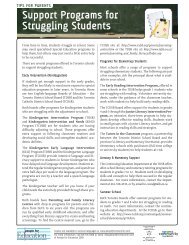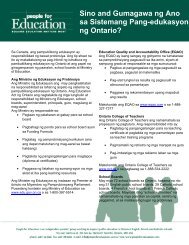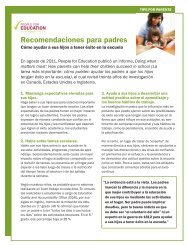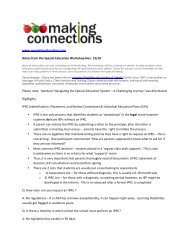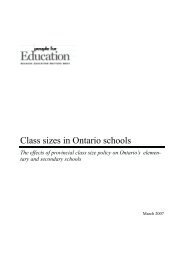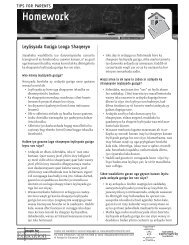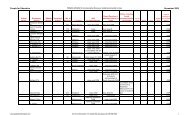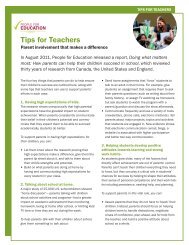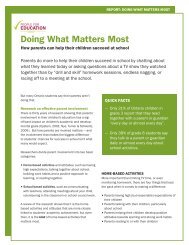Our Children Our Future Our Vision - People for Education
Our Children Our Future Our Vision - People for Education
Our Children Our Future Our Vision - People for Education
You also want an ePaper? Increase the reach of your titles
YUMPU automatically turns print PDFs into web optimized ePapers that Google loves.
<strong>Our</strong> <strong>Children</strong>, <strong>Our</strong> <strong>Future</strong>, <strong>Our</strong> <strong>Vision</strong><br />
Just in case there was any doubt about the magnitude of the problem facing First Nations, even<br />
INAC and outside experts have all found that Canada chronically underfunds First Nations in all<br />
critical social areas, not just education and that this underfunding is directly related to the negative<br />
outcomes we see highlighted in the media. 136<br />
INAC 2004 137<br />
The “inequitable access to services <strong>for</strong> First Nations [are] … contributing factors to the over-representation<br />
of Aboriginal children in child welfare system”.<br />
Neegan 2011 138<br />
INAC is so behind in infrastructure funding <strong>for</strong> water and sewer on First Nations, that it will take<br />
$4.7 billion just to fix current systems.<br />
What is really difficult to comprehend is the failure of Canada to act in the face of overwhelming<br />
evidence. It is the status quo – the maintenance of First Nations in poverty – that costs Canada<br />
so much. Studies have shown that investments in education now would bring long-term benefits<br />
in increased GDP (an extra $179 billion) and result in cost savings to all involved. 139 There is no<br />
shortage of research to show that INAC has failed and continues to fail First Nations in education.<br />
However, the story does not end there as there has also been no shortage of solutions offered in<br />
numerous studies and panels to improve First Nations education. The only thing that seems to be<br />
lacking is the political will to take concrete action.<br />
Canada must take real action to resolve its own internal policy conflicts; relinquish its paternalistic<br />
control over First Nations once and <strong>for</strong> all; and ensure that all of its laws are compliant with Indigenous<br />
laws, Constitutional protections, Treaty promises, and human/Indigenous rights.<br />
136 OAG Report, 2001 to OAG Report, 2011, supra note 71.<br />
137 Indian and Northern Affairs Canada, Internal Document dated 2004 obtained by First Nation Child and Family Caring<br />
Society via Access to In<strong>for</strong>mation Request [INAC 2004] as cited in First Nation Child and Family Caring Society, “Jordan<br />
& Shannen: First Nations children demand that the Canadian Government stop racially discriminating against<br />
them” (Ottawa: Shadow Report: Canada 3 rd and 4 th Periodic Report to the UNCRC, 2011), online: [FNCFCS Report] at 5.<br />
138 First Nation Water Report, supra note 87.<br />
139 Assembly of First Nations, “It’s <strong>Our</strong> Time: A Call to Action on <strong>Education</strong>: A Year in Review: 2010-2011” (Ottawa: AFN,<br />
2011), online: [AFN Report] at 4. A.<br />
Sharpe, J.F. Arsenault, “Investing in Aboriginal <strong>Education</strong> in Canada: An Economic Perspective” (Ottawa: Canada<br />
Policy Research Network, 2009), online: . Even the speedy resolution<br />
of treaties brings gains <strong>for</strong> Canadians: Price Waterhouse Coopers, “Financial and Economic Impacts of Treaty<br />
Settlements in BC” (November 2009), online: .<br />
Chiefs of Ontario<br />
28




